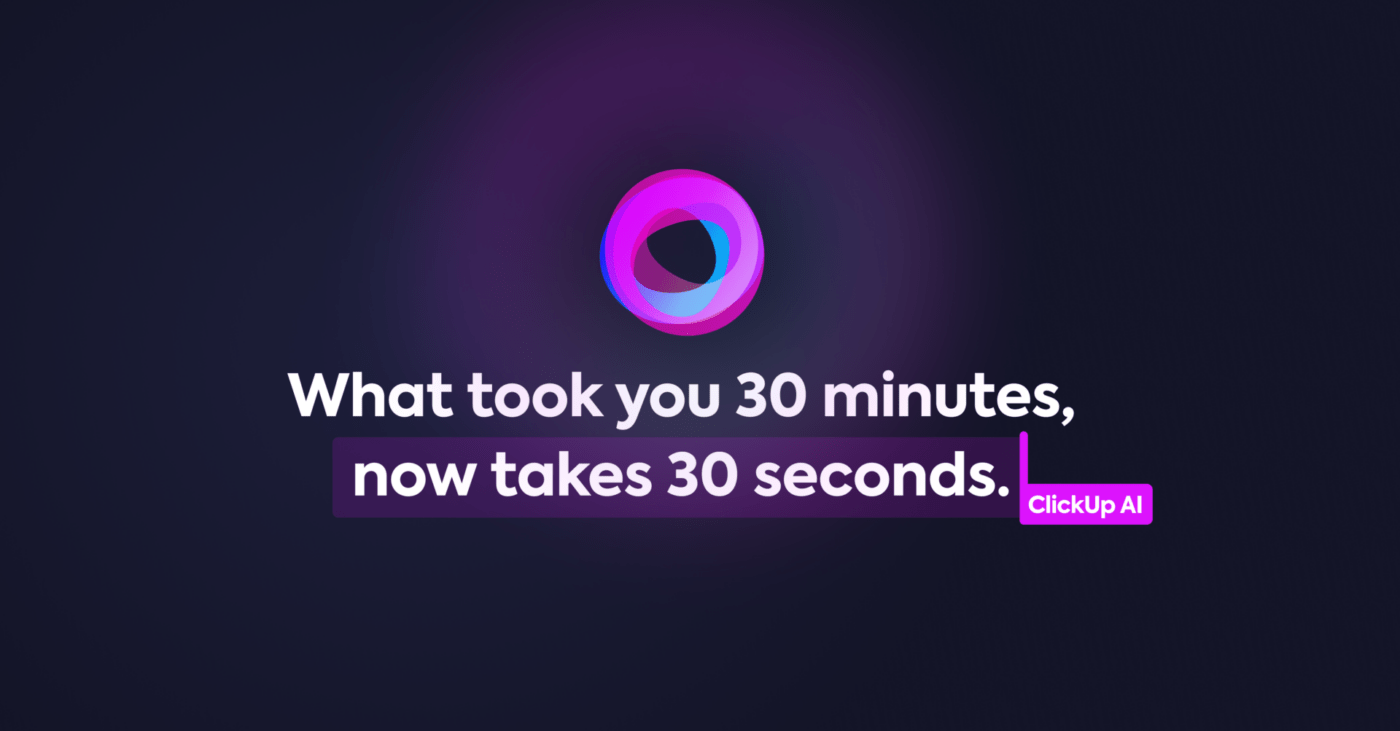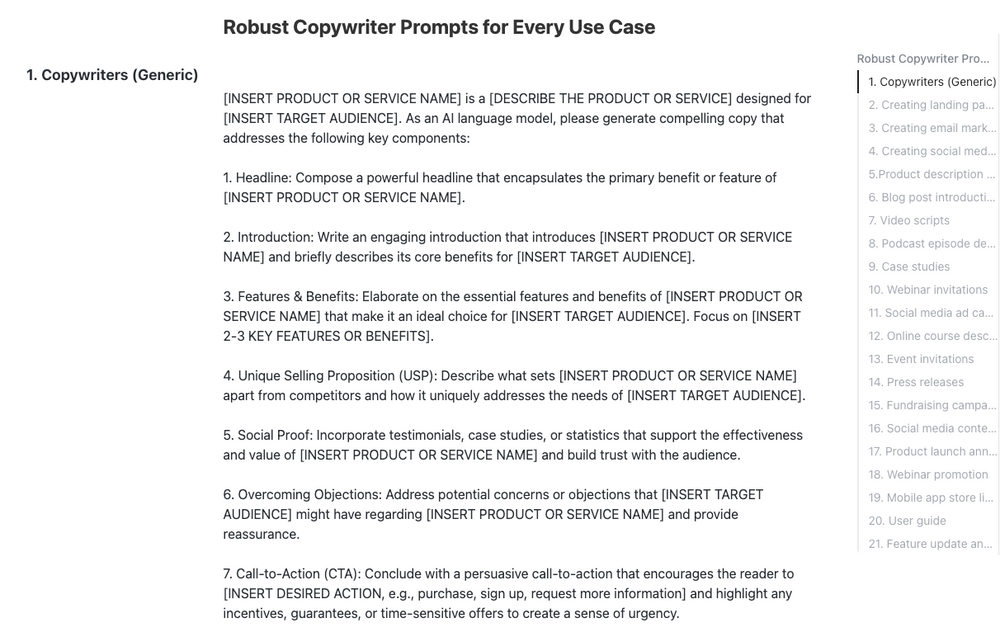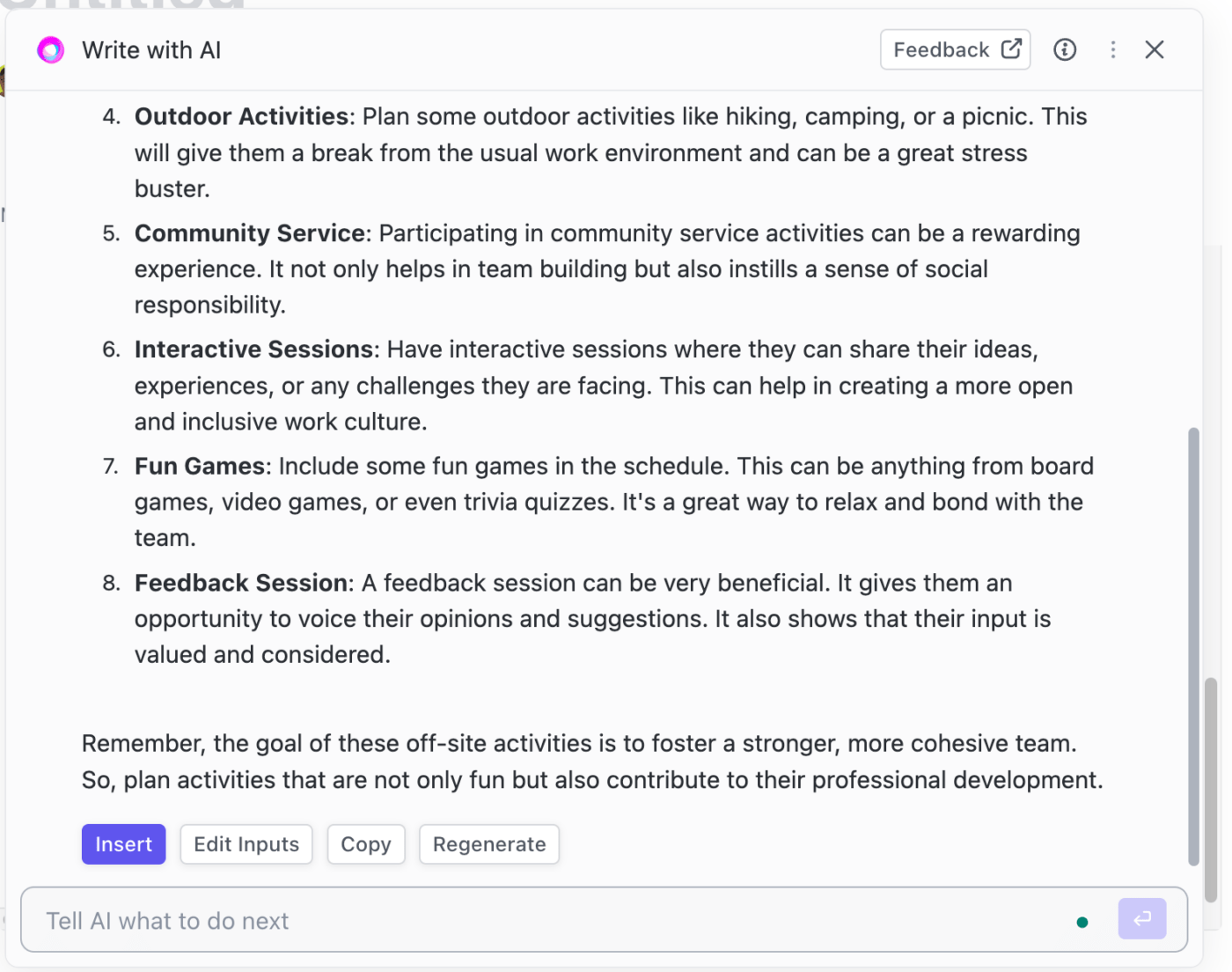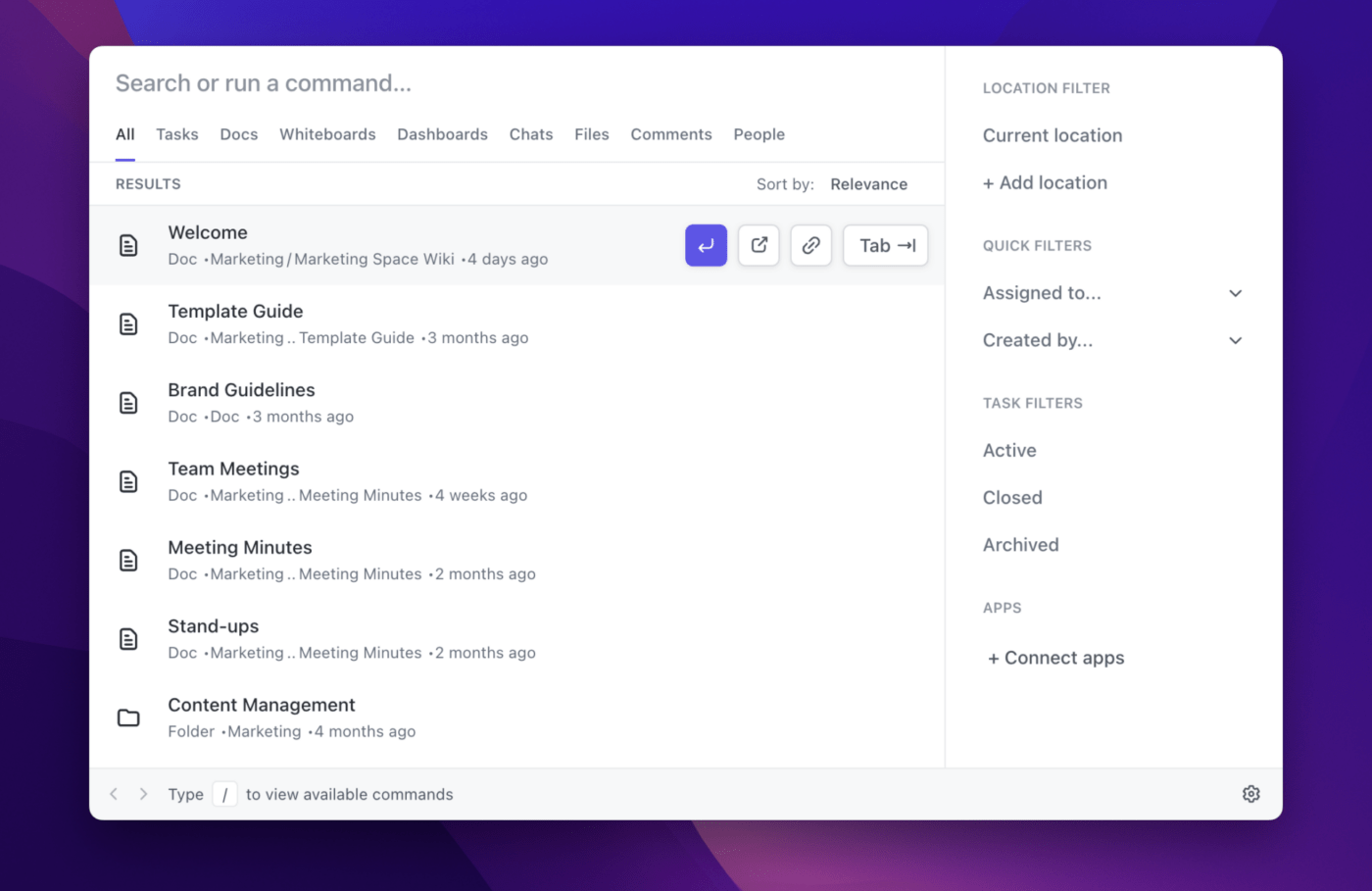لقد شهدنا جميعاً الآن تكنولوجيا الذكاء الاصطناعي أو الذكاء الاصطناعي ودورها في إعادة تشكيل نسيج وجودنا. من الرعاية الصحية إلى التمويل، والنقل إلى الترفيه، أصبح الذكاء الاصطناعي القوة الدافعة وراء عدد لا يحصى من التطورات الرائدة - وقد يكون من الصعب جداً مواكبة كل ذلك!
سواء كنت متعلمًا أو مجرد شخص فضولي غير متخصص في مجال التكنولوجيا، فإن معرفة مصطلحات الذكاء الاصطناعي قد تكون مثل استكشاف أرض أجنبية. فأنت محاط بعبارات ومصطلحات ومفاهيم جديدة، بدءاً من النماذج اللغوية الكبيرة والشبكات العصبية إلى نموذج التعلم الآلي، والتي لا تبدو منطقية على الفور.
ومع أخذ الوتيرة السريعة للتطورات في الاعتبار، فإن الأمر يستحق وقتك في الاطلاع على قاموس واضح للتعرف على المصطلحات والعبارات غير المألوفة في الذكاء الاصطناعي.
لقد قمنا بتنسيق 50 مصطلحًا يجب معرفتها في مسرد مصطلحات الذكاء الاصطناعي هذا لتزويدك بأساس متين من المعرفة في هذا المجال. بحلول نهاية هذه المقالة، ستتعرف على مصطلحات الذكاء الاصطناعي، وستكون قادرًا على تمييز آثارها، وربما حتى تسخير قدراتها في مساعيك الشخصية!

A-F: من المحول إلى الضبط الدقيق
لنبدأ بالمصطلحات الرئيسية للذكاء الاصطناعي في النطاق A إلى F التي يمكن أن تعزز فهمك لهذا المجال المعقد بشكل كبير.
1. المحول
المحول هو إطار عمل يساعد على نقل التعلّم إلى نموذج ذكاء اصطناعي جديد من خلال ربط طبقات بنموذج موجود. والغرض من ذلك هو جعل النموذج يتحول إلى مهام جديدة دون البدء من الصفر. توفر وحدات المهايئ الوقت والمال ومساحة التخزين من خلال إعادة استخدام النماذج المدربة مسبقًا لمختلف الوظائف مثل الدردشة مع أجهزة الكمبيوتر، أو الترجمة من لغة أساسية مشتركة إلى لغة جديدة، أو تشغيل الروبوتات.
2. خوارزمية الذكاء الاصطناعي
تشير خوارزمية الذكاء الاصطناعي إلى البرمجة المحددة التي تخبر الآلة كيف تعمل بشكل مستقل. وهي تتضمن تعليمات أو قواعد خطوة بخطوة تمكن أنظمة الذكاء الاصطناعي من معالجة البيانات الأولية واتخاذ القرارات والتعلم منها. هل أنت منبهر بقدرة الذكاء الاصطناعي على فهم اللغة أو التعرف على الوجوه أو لعب الشطرنج أو حتى قيادة السيارة؟ حسنًا، الخوارزمية هي العقل! 🧠
3. سلامة الذكاء الاصطناعي
سلامة الذكاء الاصطناعي هو مجال واسع النطاق يغطي مفاهيم مختلفة حول ضمان أن تكون أنظمة الذكاء الاصطناعي الرائعة لدينا ليست ذكية فحسب، بل حسنة التصرف وحسن التصرف، حتى في البيئات غير المألوفة. وهو يشير إلى المبادئ والممارسات والجهود البحثية المخصصة لدراسة تصميم نظام الذكاء الاصطناعي وبنائه ونشره. والهدف من ذلك هو تقليل المخاطر مثل المخرجات غير الموثوقة والعواقب غير المقصودة والضرر المحتمل على البشرية.
4. الذكاء الاصطناعي
يماثل التطور الرقمي للذكاء البشري الذكاء الاصطناعي. يغطي الذكاء الاصطناعي مجال علوم الكمبيوتر، بما في ذلك الرؤية الحاسوبية، الذي يجعل من الممكن للأنظمة أن تفكر وتتعلم وتنفذ العمليات التي تستدعي عادةً الذكاء البشري - ولكن على نطاق وسرعة يجعلنا نحن البشر مجرد بشر نحسدهم.
5. الأتمتة
تشير الأتمتة إلى استخدام تكنولوجيا الذكاء الاصطناعي لتشغيل الأعمال الشاقة والعمليات التجارية على الطيار الآلي - وينصب التركيز على كفاءة المهام وتقليل الأخطاء في العمل اليدوي. أتمتة ClickUp هو نقطة انطلاق رائعة للمبتدئين الذين يرغبون في استكشاف إمكانات الأتمتة من خلال واجهة بسيطة. يساعدك على تعيين المشغلات والشروط لأتمتة المهام الروتينية، من إرسال رسائل البريد الإلكتروني للعملاء المحتملين وتحديث الحالات إلى القيام بالأعمال الإدارية، كل ذلك ببضع نقرات سهلة. مع خيارات الأتمتة المبنية مسبقًا والمخصصة في مجموعة الأدوات الخاصة بك، ستندهش من مقدار الوقت والجهد الذي يمكنك توفيره مع الحفاظ على مشاريعك و قوائم المهام على المسار الصحيح

استخدم وصفات الأتمتة المبنية مسبقًا أو خصصها بناءً على احتياجاتك، حتى يتمكن فريقك من التركيز على ما هو أكثر أهمية
قراءة إضافية: اطلع على 10 أفضل أدوات الذكاء الاصطناعي للأتمتة !
6. الصندوق الأسود للذكاء الاصطناعي
يشير مصطلح الصندوق الأسود للذكاء الاصطناعي أو BAI إلى نموذج ذكاء اصطناعي لا يتسم بالشفافية الفائقة فيما يتعلق بكيفية اتخاذه للقرارات. يكافح كل من المستخدمين والمصممين لفهم أو تفسير طريقة عمله الداخلية أو إجراءات اتخاذ القرار - على عكس نموذج الصندوق الأبيض، الذي يمكن فهمه بسهولة. هذا الافتقار إلى الانفتاح يمكن أن يثير تساؤلات حول الأخلاقيات والمسؤولية وإمكانية وجود تحيزات، مما يجعل نماذج الذكاء الاصطناعي غير مناسبة للاستخدام في المجالات ذات المخاطر العالية مثل الجيش أو الرعاية الصحية.
7. البيانات الضخمة
تتضمن البيانات الضخمة مجموعات البيانات الكبيرة والمعقدة التي تكون كبيرة جدًا بحيث لا يمكن معالجتها أو تحليلها باستخدام أدوات إدارة البيانات . تحتاج إلى تقنيات الذكاء الاصطناعي المتخصصة للكشف عن الرؤى والأنماط والاتجاهات القيّمة من البيانات. في المقابل، تُستخدم البيانات الضخمة لتدريب الذكاء الاصطناعي، لذا فهي علاقة تكافلية. 🤝
8. ChatGPT
ChatGPT عبارة عن رفيق محادثة مدعوم بالذكاء الاصطناعي مصمم للدخول في محادثات طبيعية وغنية بالمعلومات حول مواضيع مختلفة. وهو يستجيب من خلال الإجابة عن الأسئلة، وتقديم التوضيحات، وتقديم الرؤى. تم تدريب ChatGPT باستخدام التعلم الخاضع للإشراف والتعلم المعزز من ردود الفعل البشرية أو RLHF، مما يجعله متعدد الاستخدامات أداة ذكاء اصطناعي قادرة على التفاعلات الشبيهة بالبشر.
إذا أعجبك هذا الصوت، يمكنك أيضًا الاطلاع على ما يلي بدائل ChatGPT -أو ربما يعجبك تطبيق ClickUp مطالبات جاهزة لاستخراج الردود الذكية من هذه الأدوات!

كن خبيرًا في كتابة الإعلانات مع قالب موجهات الدردشة لكتابة الإعلانات من ClickUp
9. الدردشة الآلية
برنامج كمبيوتر ذكي جاهز دائمًا للدردشة، وجاهز للإجابة على الاستفسارات وتقديم المساعدة في مهام محددة - هذا هو روبوت الدردشة. إنه البطل المجهول لدعم العملاء وإيجاد المعلومات، حيث أن الغرض الرئيسي منه هو التفاعل مع اللغة البشرية.
لذا، في المرة القادمة التي تستمتع فيها بنص توصية من خدمة البث أو موقع التجارة الإلكترونية الخاص بك، ربما تشهد سحر الروبوت المدعوم بالذكاء الاصطناعي!
10. الذكاء الاصطناعي التحادثي
يشير الذكاء الاصطناعي التحادثي إلى التكنولوجيا التي تُمكِّن الآلات، مثل روبوتات الدردشة والمساعدين الافتراضيين والتطبيقات المماثلة القائمة على الكلام، من إجراء محادثات شبيهة بالمحادثات البشرية. ويستخدم هذا الذكاء الاصطناعي معالجة اللغة الطبيعية أو البرمجة اللغوية العصبية وقوة الحوسبة العالية في سياقات ولغات مختلفة لأداء وظائف متعددة الاستخدامات، مثل التعرف على مقطوعة موسيقية أو طلب شطيرة لك! 🥪
11. زيادة البيانات
تتضمن زيادة البيانات المعالجة الماهرة لبياناتك الحالية وتوسيع نطاقها. وتعد هذه الممارسة حجر الزاوية في التعلم الآلي والذكاء الاصطناعي لأنه يزيد من حجم وتنوع بيانات التدريب لنموذج ما. والهدف من ذلك هو تمكين الخوارزميات من خلال تزويدها بنطاق أوسع من الأمثلة للتعلم منها.
12. التعلم العميق
التعلم العميق هو الدماغ وراء ثورة الذكاء الاصطناعي. وهو مجموعة فرعية من نظام التعلم الآلي تهدف إلى محاكاة بنية الدماغ البشري، باستخدام شبكات عصبية اصطناعية ذات طبقات متعددة لمعالجة كميات هائلة من البيانات. يمكن لنماذج التعلم العميق التعرف على الأنماط وإجراء التنبؤات وتعلم المهام المعقدة، مما يُحدث ثورة في مجالات مثل التعرف على الوجوه والكلام والقيادة الذاتية.
13. الذكاء الاصطناعي الأخلاقي
الذكاء الاصطناعي الأخلاقي هو فرع يشمل القضايا المتعلقة بالبوصلة الأخلاقية للذكاء الاصطناعي. وهو ينطوي على تصميم واستخدام أنظمة الذكاء الاصطناعي بطرق تعطي الأولوية للإنصاف والشفافية والمساءلة واحترام القيم والحقوق الإنسانية دون التسبب في ضرر أو تمييز.
14. الضبط الدقيق
الضبط الدقيق هو أقرب إلى التدريب المتخصص لنماذج التعلم الآلي الموجودة مسبقاً لتحسين أدائها لمهام أو مجالات محددة، بما يضمن إتقانها لخدمة تلك المجالات.
G-L: من الذكاء الاصطناعي التوليدي إلى نموذج اللغة الكبيرة
غالبًا ما ستصادف المصطلحات التالية في نطاق G-L، وهي مصطلحات محورية لفهمك للذكاء الاصطناعي.
15. الذكاء الاصطناعي التوليدي
يشير مصطلح الذكاء الاصطناعي التوليدي أو GenAI إلى نماذج الذكاء الاصطناعي التي تصوغ محتوى جديدًا - مثل الصور أو النصوص - يعكس الأنماط والأنماط المستمدة من بيانات التدريب الخاصة به. من الفن التخيلي إلى المقالات المفيدة، يمكن لأدوات GenAI إنتاج مجموعة متنوعة من المخرجات دون الحاجة إلى تعليمات برمجية، ولهذا السبب فهي بمثابة أدوات مساعدة للإنتاجية للعديد من المحترفين
من أبرز أدوات الذكاء الاصطناعي التي تركز على الإنتاجية, ClickUp يتميز بوظائف الذكاء الاصطناعي التوليدي. مساعد الكتابة المدعوم بالأبحاث، ClickUp AI، يمكنه إنشاء نص برؤوس وجداول منظمة مسبقًا حول أي موضوع تقريبًا، سواء كنت تقوم بإنشاء خطة الذهاب إلى السوق كتابة بريد إلكتروني للعميل تلخيص تقارير الأخطاء أو جدولة الألعاب لـ بناء الفريق . وقد تم تحسين الأداة واختبارها على نطاق واسع، بحيث تقدم مخرجات واضحة ومتسقة.

توفر إمكانات الكتابة بالذكاء الاصطناعي في ClickUp ذلك بالضبط، مما يضمن إخراجًا واضحًا وموحدًا للنص الذي تم إنشاؤه بالذكاء الاصطناعي
بالإضافة إلى ذلك، مع نموذج تتبع مؤشرات الأداء الرئيسية للذكاء الاصطناعي التوليدي ClickUp يمكنك قياس تأثير استخدام الذكاء الاصطناعي في مجالات مثل إنشاء المحتوى وابتكار المنتجات!
16. الخوارزمية الجينية
تعد الخوارزميات الجينية، أو GAs، جزءًا من مجموعة أكبر من الخوارزميات التطورية التي تعمل بشكل أقرب إلى التطور الرقمي. تقدم GAs تقنية حسابية مستوحاة من الانتقاء الطبيعي، وتساعد في حل المشاكل المعقدة باستخدام سمات التطور البيولوجي، مثل الطفرة والبقاء للأصلح. 🐒
تُستخدم هذه الخوارزميات على نطاق واسع في تحسين البحث والتعلم الآلي.
17. GPT-3
تشكل GPTs - أو المحولات التوليدية المدربة مسبقًا - مجموعة متنوعة من النماذج اللغوية القائمة على الشبكة العصبية التي طورتها Open AI.
تم تصنيف GPT-3 من بين أكثر النماذج تقدماً في عصرها. مع حجم مفردات يصل إلى 175 مليار كلمة، تكمن براعته في فك رموز وإنتاج نصوص شبيهة بالنصوص البشرية، مما يجعله أداة متعددة الاستخدامات لمختلف مهام اللغة الطبيعية، بدءاً من روبوتات الدردشة وإنشاء المحتوى إلى الترجمة اللغوية وما بعدها.
18. GPT-4
GPT-4 هو نموذج متعدد الوسائط أكثر تطوراً وتدريباً من سابقه. ويمكنه العمل مع كل من المدخلات النصية والصور وهو قادر بما يكفي لدعم التعاون الإبداعي المعقد - فكّر في التعاون معه لتأليف الموسيقى أو صياغة السيناريوهات أو حتى محاكاة أسلوبك المميز في الكتابة.
19. الهلوسة
في سياق الذكاء الاصطناعي، تحدث الهلوسة عندما يولد النظام معلومات غير دقيقة أو غير متماسكة أو غير منطقية، وعادةً ما يكون ذلك بسبب أخطاء أو قيود في تدريباته أو فهمه أو قدراته على المعالجة. إنها زوبعة يمكن أن تجعل نظام الذكاء الاصطناعي غير موثوق به.
20. لغة معالجة المعلومات-IPL
تم تطوير لغة معالجة المعلومات أو IPL في أواخر خمسينيات القرن العشرين، وكانت لغة معالجة المعلومات أو IPL واحدة من أولى لغات البرمجة عالية المستوى لمعالجة البيانات ومعالجة المعلومات. واليوم، تنفرد لغة معالجة المعلومات IPLs بكل تطبيق من تطبيقات الذكاء الاصطناعي.
21. إنترنت الأشياء-إنترنت الأشياء
يعمل إنترنت الأشياء، أو إنترنت الأشياء، كشبكة من الأشياء الرقمية المدمجة في عالمنا المادي. وهي عبارة عن شبكة من الأجهزة الذكية، من الأشياء اليومية مثل منظمات الحرارة والساعات الذكية إلى الآلات الصناعية، التي يمكنها جمع البيانات وتبادلها والتصرف بناءً عليها. عند دمجها مع الذكاء الاصطناعي، تُظهر آلات إنترنت الأشياء قدرات صيانة تنبؤية أفضل.
22. النظام القائم على المعرفة-KBS
فكر في النظام القائم على المعرفة أو KBS كحكيم افتراضي. إنه برنامج كمبيوتر يعتمد على برنامج حاسوبي يعتمد على قاعدة معرفية وهي مستودع للمعلومات والقواعد، لمعالجة المشاكل المعقدة وتقديم إرشادات الخبراء في مجال معين. وهي تساعد في اتخاذ القرارات واستكشاف الأخطاء وإصلاحها في مختلف المجالات.
على سبيل المثال، تدعم الذكاء الاصطناعي مستندات ClickUp بمثابة قاعدة معرفية ممتازة للشركات. يمكن لمساعد الذكاء الاصطناعي المدمج فيه تلخيص المحتوى المطول لمساعدتك على استيعاب المعلومات واتخاذ القرارات بشكل أسرع. ويمكنه أيضًا استخراج عناصر الإجراءات من ملاحظات الاجتماع وسير العمل، وتحسين كفاءتك الإجمالية.
تعاون على الأفكار وأنشئ مستندات أو صفحات ويكي مذهلة مع صفحات متداخلة وخيارات تنسيق مخصصة لخرائط الطريق وقواعد المعرفة والمزيد
23. نموذج اللغة الكبيرة - LLM
عملاق لغوي في عالم الذكاء الاصطناعي هو نموذج اللغة الكبيرة أو LLM. وهو نظام ذكاء اصطناعي قوي مبني على بيانات واسعة النطاق وخوارزميات متطورة، مما يمكنه من فهم اللغة البشرية وتوليدها ومعالجتها بإتقان ملحوظ.
م - ر: من التعلم الآلي إلى النظام القائم على القواعد
بالانتقال إلى مصطلحات الذكاء الاصطناعي M-R، سنستكشف مفاهيم مثل نماذج التعلّم الآلي والشبكات العصبية التي تشكل العمود الفقري للعديد من أنظمة الذكاء الاصطناعي المتقدمة.
24. التعلم الآلي
يتضمن التعلم الآلي تدريب الخوارزميات على البيانات للتعرف على الأنماط واتخاذ القرارات. وكلما تعرضت الخوارزمية للمزيد من البيانات، فإن تتحسن عملية تمييزها مما يجعلها أكثر مهارة في مهامها المقصودة. الأمر أشبه بتعليم الكمبيوتر التعلم والتكيف من تلقاء نفسه.
25. توليد اللغة الطبيعية - NLG
يأخذ توليد اللغة الطبيعية، أو أنظمة NLG، الحقائق والأرقام ونقاط البيانات ويحولها إلى سرد متماسك، ويولد تقارير ومقالات ومحتوى يمكن للبشر فهمه بسهولة. تعمل هذه التقنية على تشغيل التقارير الآلية والردود المخصصة للعملاء.
26. معالجة اللغة الطبيعية - البرمجة اللغوية العصبية
تُعد معالجة اللغة الطبيعية أو البرمجة اللغوية العصبية بمثابة جسر بين البشر والآلات، مما يسمح لأجهزة الكمبيوتر بفهم اللغة البشرية وتفسيرها والاستجابة لها. وهي تستخدم مفاهيم متقدمة مثل تحليل المشاعر لتحسين التفسيرات.
فيما يلي عرض توضيحي لكيفية عمل البرمجة اللغوية العصبية في ClickUp - تتيح المنصة للمستخدمين استخدام أوامر اللغة الطبيعية إلى :
- تأجيل الإشعارات
- تعيين تواريخ البدء والانتهاء/الاستحقاق في المهام
- إضافة إدخالات الوقت أو تحريرها يدويًا
تساعدك مجموعة الميزات هذه على متابعة الاجتماعات والتقويمات وتنقل في يومك بدون إشعارات مزعجة!

استخدم اللغة الطبيعية لتعيين تواريخ الاستحقاق المتكررة في قائمة تكرار المهام
27. الشبكة العصبية
الشبكة العصبية هي نظام حوسبة مستوحى من الدماغ البشري. وهي تتضمن طبقات من العقد المترابطة التي تعمل معاً لتحليل البيانات ومعالجتها، مما يسهل التعلم العميق والتعرف على الأنماط.
28. الذكاء الاصطناعي بدون كود تطوير بدون كود هي طريقة لأي شخص ليس لديه خبرة في البرمجة لاستحضار التطبيقات والبرامج. باستخدام الذكاء الاصطناعي بدون كود، يمكنك عادةً الاستفادة من التكوينات المرئية والرسومية لإنشاء تطبيقات الذكاء الاصطناعي. الأمر كله يتعلق بجعل التكنولوجيا أكثر سهولة.
29. الذكاء الاصطناعي المفتوح
Open AI هي شركة أمريكية متخصصة في أبحاث الذكاء الاصطناعي والقوة العقلية التي تقف وراء مغيري قواعد اللعبة مثل GPT-3 و GPT-4. وهي تسعى جاهدة لتقديم منتجات مسؤولة وأخلاقية وسهلة الاستخدام. وهي أطلقت مؤخرًا GPTs، وهو مساعد ذكاء اصطناعي يمكن للمستخدمين تخصيصه لمختلف الأدوار والمقاصد.
30. التعرف الضوئي على الحروف-OCR
يقوم هذا المعالج التقني بتحويل الورق إلى وحدات بكسل. يقوم OCR بمسح كل من النصوص المطبوعة والمكتوبة بخط اليد، وتحويلها إلى نص يمكن قراءته آلياً. تعمل أدوات التعرف الضوئي على الحروف الحديثة على تسخير الذكاء الاصطناعي لجعل المحتوى الورقي قابلاً للتحرير والبحث بسهولة، حتى أنها تسمح بالمعالجة الآلية مع إمكانات القراءة السياقية والقراءة السريعة.
31. التحسين
التحسين هو ضبط نموذج الذكاء الاصطناعي لجعله يعمل بأكبر قدر ممكن من الكفاءة. سواء كانت خوارزميات التعلم الآلي أو عملية تصنيع أو سلسلة توريد, تقنيات التحسين تهدف إلى إيجاد أفضل حل ممكن ضمن قيود معينة. يتعلق الأمر كله بتعظيم الأداء، وتقليل التكاليف، وجعل الأمور تعمل كآلة تعمل بشكل جيد.
32. التدريب المسبق
التدريب المسبق هو المرحلة الأولية التي تتعلم فيها نماذج الذكاء الاصطناعي أساسيات إنجاز مهمة معينة، مثل تعلم الحروف الأبجدية قبل الغوص في كتابة جمل كاملة. تتعرض النماذج لمجموعات بيانات كبيرة، مما يساعدها على فهم اللغات والأنماط. وهذا يمهد الطريق للضبط الدقيق، حيث تتدرب النماذج على التخصص في مهام محددة.
33. موجه
الموجه هو المدخلات أو الاستعلام الذي يستخدمه نموذج الذكاء الاصطناعي لإنتاج مخرجات ذات معنى وذات صلة بالسياق. يمكن أن تتراوح من استعلامات بسيطة مثل ترجم هذه الجملة إلى الفرنسية إلى طلبات أكثر تعقيدًا مثل اكتب قصة قصيرة عن محقق يحل لغزًا. 🕵️
استخدام المطالبة الصحيحة أمر بالغ الأهمية للحصول على استجابة مفيدة من الذكاء الاصطناعي. يجب عليك صياغتها بشكل مناسب لجعلها مناسبة لأسلوب معالجة النظام.
أصبح الضغط على المطالبات شيئاً من الماضي مع ClickUp AI! تقدم المنصة بشكل هادف أكثر من 100 مطالبة خاصة بالأدوار وأوامر الذكاء الاصطناعي التي تؤدي إلى استجابات تتماشى تمامًا مع تفضيلاتك ومتطلباتك. يمكنك حتى إعادة المطالبة لضبط النتائج!

قم بضبط نتائجك للوصول إلى محتوى أفضل بشكل أسرع باستخدام إعادة الطلب في ClickUp AI
34. الاستدلال
الاستدلال في الذكاء الاصطناعي هو القوة المعرفية التي تقود الذكاء الاصطناعي. يمكن أن يستند استدلال نظام الذكاء الاصطناعي على المنطق أو القواعد والأنماط الراسخة أو الحس السليم، لكن العديد من النماذج يتم تدريبها أيضًا على الاستدلال الاستقرائي أو الاستدلال الأحادي.
35. التعلم المعزز
التعلم المعزز يشبه تعليم الحيل الجديدة للكلب، ولكن بدلاً من توقع المكافآت، يتعلم الذكاء الاصطناعي من خلال المكافآت والعقوبات . يستكشف عميل الذكاء الاصطناعي بيئة ما، وعندما يقوم بحركات جيدة، يحصل على تربيتات افتراضية على ظهره، وعندما يخطئ يواجه صفعات رقمية على معصمه - عقوبات. وبمرور الوقت، يكتشف الذكاء الاصطناعي أفضل خطة لعب لتحقيق أقصى قدر من الأشياء الجيدة.
36. الروبوتات
إنه مزيج آسر من الهندسة وذكاء الحاسوب والذكاء الاصطناعي الذي يبعث الحياة في الروبوتات. يمكن أن تكون هذه العجائب الميكانيكية أي شيء بدءاً من المكنسة الكهربائية المفيدة إلى الرفاق المستقبليين الشبيهين بالبشر. يتعلق الأمر كله بإضفاء حس الحركة على الآلات، مما يجعلها لا غنى عنها في مجالات مثل التصنيع والرعاية الصحية وحتى استكشاف الفضاء الخارجي. 🤖
37. نظام قائم على القواعد
يعتمد النظام القائم على القواعد على قواعد ومنطق محدد مسبقاً لاتخاذ القرارات وتنفيذ المهام. إنه يشبه وجود كتاب قواعد، حيث يتبع نظام الذكاء الاصطناعي تعليمات وشروط محددة للوصول إلى استنتاجات أو اتخاذ إجراءات. لنأخذ تطبيق أمان المنزل الذكي كمثال. إذا اكتشف مستشعر الحركة - الحالة - يقوم بتشغيل إشعار إلى الهاتف الذكي لصاحب المنزل - الإجراء.
S-Z: من خوارزمية البحث إلى التعلم من الصفر
يغطي الجزء الأخير من مسرد مصطلحات الذكاء الاصطناعي المصطلحات من S إلى Z.
38. خوارزمية البحث
هي عملية خطوة بخطوة تُستخدم في علوم الكمبيوتر والذكاء الاصطناعي لتحديد موقع معلومات محددة ضمن مجموعة بيانات واسعة. على سبيل المثال، يستخدم برنامج ClickUp خوارزميات متقدمة لـ البحث الشامل ميزة تساعد المستخدمين على التنقل بشكل منهجي عبر المهام والبيانات المخزنة.

ابحث بسهولة عبر جميع المهام، والمستندات، والمشاريع في ClickUp للانتقال إلى عملك
39. خرائط التنظيم الذاتي - SOM
تخيل خرائط التنظيم الذاتي أو SOM كمنظمي البيانات في عالم الذكاء الاصطناعي. يتم تدريبها على تمثيل البيانات عالية الأبعاد في نموذج أبسط مع الاحتفاظ بتضاريسها الأصلية. تكمن الفكرة في تسهيل فهم البيانات.
40. تحليل المشاعر
تحليل المشاعر هو تقنية ذكاء اصطناعي تُستخدم لفك شفرة القيمة اللونية للجمل، والتي يمكن أن تكون إيجابية أو سلبية أو محايدة. وغالبًا ما تستخدمه الشركات لتحليل وسائل التواصل الاجتماعي المنشورات أو المراجعات أو المقالات الإخبارية والتقاط الآراء الأساسية حول منتجاتهم.
41. تحويل الكلام إلى نص
تقنية أنيقة تستمع إلى صوتك وتحول ما تقوله إلى كلمات مكتوبة على الشاشة، هذا كل ما في الأمر. سواء كنت تملي رسالة تدوين اجتماع أو استخدام الأوامر الصوتية مع جهازك، فإن تحويل الكلام إلى نص يجعل التواصل و إدخال البيانات نسيم
42. ذكاء اصطناعي قوي
غالباً ما يشار إليه بالذكاء العام الاصطناعي - الذكاء الاصطناعي العام - أو الذكاء الاصطناعي العميق، يمثل الذكاء الاصطناعي القوي أعلى مستوى من الذكاء الاصطناعي. فهو يمتلك ذكاءً شبيهًا بالذكاء البشري ويمكنه أن يفهم ويتعلم ويفكر ويطبق المعرفة عبر مجموعة واسعة من المهام بطريقة لا يمكن تمييزها عن البشر. الذكاء الاصطناعي القوي هو مفهوم واسع - وليس أداة معينة.
ومن الأمثلة على عروض الذكاء الاصطناعي القوي التي يمكن القول إنها قوية مساعد الكتابة بالذكاء الاصطناعي من ClickUp. فهو لا يركز فقط على مجال واحد من مجالات توليد المحتوى -يمكنك استخدامه للحصول على دعم التأليف في الوقت الفعلي، وتلخيص النص بكفاءة، وتحسين قواعد اللغة والنبرة اللغوية للنصوص، و طرح أفكار جديدة . سواء كنت مديرًا تنفيذيًا متمرسًا في مجال الأعمال أو مجرد صاحب شركة ناشئة جديدة ، هذه الأداة ضرورية للكتابة الاحترافية الفعالة.
استخدم ClickUp AI لإنشاء تحديثات المهام والملخصات والمزيد تلقائيًا بضغطة زر واحدة
43. مولد تحويل النص إلى صورة
هذه أداة قوية للذكاء الاصطناعي تأخذ الأوصاف المكتوبة أو بيانات الإدخال النصية وتنشئ صوراً بناءً على تلك المطالبات. منتصف الرحلة مثال جيد على مولد تحويل النص إلى صورة.
44. تحويل النص إلى كلام
على النقيض من تحويل النص إلى نص، يعمل تحويل النص إلى كلام على تحويل النص المكتوب إلى كلمات منطوقة. سواء أكان قارئ شاشة يساعد الأشخاص ذوي الإعاقة البصرية أو مساعداً افتراضياً يقرأ رسائلك بصوت عالٍ، فإن تحويل النص إلى كلام يجعل المعلومات متاحة والتواصل أكثر شمولاً، تماماً مثل قارئ قصص الذكاء الاصطناعي.
45. نقل التعلم
هذه تقنية تستفيد فيها نماذج الذكاء الاصطناعي من المعرفة المكتسبة من مهمة ما للتفوق في مهمة أخرى. فبدلاً من البدء من الصفر في كل مرة، فإنها تبني على ما تعلمته بالفعل. في عالم الذكاء الاصطناعي، يُستخدم التعلّم التحويلي لجعل النماذج أكثر ذكاءً وكفاءةً في المهام المقصودة.
46. التعلم غير الخاضع للإشراف
مثل المستكشف الحر التعلم غير الخاضع للإشراف عبارة عن خوارزمية تعلم آلي حيث لا يحتوي النموذج على معلم/مدرب يقدم إجابات واضحة. بدلاً من ذلك، يقوم النموذج بغربلة البيانات والعثور على الأنماط وفهمها من تلقاء نفسه. يتم استخدامه لمهام مثل تجميع البيانات المتشابهة أو تقليل تعقيد المعلومات.
47. الواقع الافتراضي-الواقع الافتراضي
طرق، طرق، الواقع الافتراضي على بابك! بمساعدة من الذكاء الاصطناعي، ينقلك من محيطك المادي إلى عالم مولد بالكمبيوتر. باستخدام سماعة رأس الواقع الافتراضي، يمكنك المشي على سطح المريخ أو محاربة التنانين - أو ربما حضور جولة تايلور سويفت في جولة إراس يوماً ما - كل ذلك دون مغادرة غرفتك.🕺
48. ذكاء اصطناعي ضعيف - ذكاء اصطناعي ضيق
الذكاء الاصطناعي الضعيف، أو الذكاء الاصطناعي الضيق، هو الذكاء الاصطناعي المتخصص في الغرفة. فهو ليس خبيرًا عامًّا يعرف كل شيء، بل هو متخصص في مهام محددة. تخيلها كخبير افتراضي، تم ضبطه بدقة للتعامل مع مهمة معينة، سواء كانت التفوق في لعبة شطرنج أو اكتشاف الوجوه في الصور الفوتوغرافية. في حين أنه بارع في مجاله المتخصص، إلا أنه لا يتدخل في عالم الذكاء البشري العام.
49. الذكاء الاصطناعي القابل للتفسير XAI
الذكاء الاصطناعي القابل للتفسير هو نوع خاص من الذكاء الاصطناعي مصمم ليوضح لنا التروس والتروس داخل عملية اتخاذ القرار في الذكاء الاصطناعي. مع XAI، لست مضطرًا إلى تخمين سبب اتخاذ الذكاء الاصطناعي لخيارات معينة - فهو يخبرك. هذه الشفافية مهمة للغاية، خاصةً في المجالات الحاسمة مثل الرعاية الصحية والتمويل والسيارات ذاتية القيادة، حيث نحتاج إلى فهم قرارات الذكاء الاصطناعي والثقة بها.
50. التعلُّم من دون إطلاق النار
التعلم بدون لقطات هو نهج ذكي للتعلم الآلي حيث تتعلم نماذج الذكاء الاصطناعي التعرف على الأشياء أو المفاهيم دون أمثلة مسبقة. فبدلاً من عرض عدد لا يحصى من الصور لحيوانات نادرة مثلاً، يمكنها التعرف عليها حتى لو لم ترها من قبل. أنت تعلم الذكاء الاصطناعي التفكير على قدميه، مما يجعله قابلاً للتكيف بشكل لا يصدق في المواقف التي قد تتعثر فيها أساليب التعلم الآلي التقليدية. 🦾
انتقل إلى حدود الذكاء الاصطناعي مع ClickUp!
لقد نجحت أخيرًا في اجتياز متاهة مصطلحات الذكاء الاصطناعي العصرية! للازدهار في هذا المشهد المتطور باستمرار، يجب أن نتحلى بعقلية التعلم المستمر والاستعداد لتبني التقنيات الجديدة.
ومن خلال القيام بذلك، سنظل على صلة بالموضوع ونصبح مشاركين فاعلين في تشكيل المستقبل. وباستخدام الأدوات المناسبة، مثل ClickUp، يمكنك مواكبة الابتكار وتصبح رائداً في عالم الذكاء الاصطناعي. التأقلم والتعلم والتطور مع حساب ClickUp وتوسيع نطاق عملك ومساعيك المهنية! ☘️

